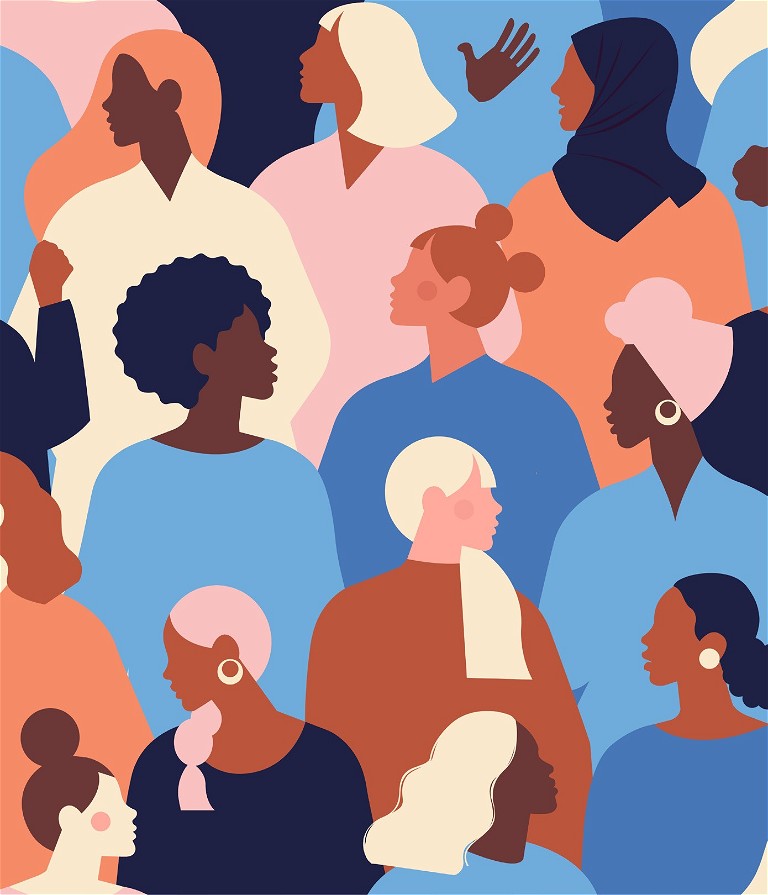WOMEN'S HEALTH
Gender diversity: a critical component in clinical trials
Alicia Staley from Medidata explores the need for diversity in clinical trials, especially in terms of gender diversity, and how this can improve outcomes of clinical trials

The COVID-19 pandemic shone a light on the entire healthcare and life sciences industry. Clinical trials attracted particular attention as researchers searched for therapies, treatments and vaccines to combat the virus, while regulators worked hard to expedite the process for getting a trial up and running. This put clinical trials under a microscope, with many outside the industry now aware of the trial process. This increased focus also highlighted some significant flaws, including the lack of diversity in trials. Black Americans, for example, were significantly underrepresented in some COVID-19 vaccine trials.1 What’s more, women are still frequently underrepresented in clinical trials across the board, even in disease areas where they are most affected.
Gender diversity matters and it remains a major issue that must be addressed if we are to ensure that all patients receive the same quality treatments. The situation does appear to be improving, but it remains a problem and some recent studies have suggested that early stage trials are particularly poor at ensuring a gender balance.
This is problematic for several reasons. Women differ physiologically to men. They can present completely different symptoms for a given disease and can respond differently to medication and dosing levels compared to men. Research even suggests women may be more likely to experience adverse side effects compared to men for a given drug.2 By not testing products on representative populations, researchers risk producing ineffective data that does not accurately reflect safety or efficacy.
Representing patient populations
The principal purpose of most clinical trials is to assess two things: safety and efficacy of a drug or device within a patient population. Some diseases and conditions disproportionately impact certain demographics. It is important that clinical trials reflect the gender diversity of the patient population in the real world, so safety and efficacy data is reliable and accurate as different people may respond to treatments in different ways. It’s not about ensuring a 50/50 balance of gender, but ensuring the gender ratio of the trial participants mirrors that of the real-world patient population.
Trial designs that fail to take into account gender diversity might be required by the regulatory bodies (either pre- or post-market) to carry out further work to validate the data, bringing additional costs to research budgets. For example, several post-marketing studies in diabetes treatments had to be re-run because the drugs were metabolised differently in different populations.
Working in the best interests of patients
Clinical research organisations and the life sciences industry are doing a disservice to patients and those who volunteer for trials by ignoring the importance of gender in trial outcomes. Inaccurate or incomplete data, coupled with delays in the clinical process create difficulties and frustrations for patients who may have to wait longer for effective treatments due to a lack of diversity. Rerunning trials is not only costly, but places extra burden on trial participants and may require new patient populations resulting in additional challenges – particularly for disease areas where recruitment is already difficult.
The clinical trials process is rarely smooth, even at the best of times. Diseases are complex, treatments are multifaceted and there is so much we just don’t know about the human body. The amount of time and resources currently lost due to inefficiencies in the system and suboptimal trial design is significant. This is something we can and should help control and it is important that our industry shows progress to maintain and improve patient relationships, alleviate patient burden, encourage participation in research and, ultimately, bring life-changing drugs to patients who need them.
What does the future look like?
More than three years on from the start of the pandemic, diversity in clinical trials remains a critical issue. However, there has been progress and it is worth highlighting how the industry is working hard to overcome it.
Decentralising trials to boost diversity
Attracting representative trial populations is vital and requires companies to consider the barriers that may exclude different demographic groups – or entire patient populations – from participating.
For example, women are often responsible for family care as well as providing an income, which might prevent them from being able to take part in a trial where distance and cost create a barrier.3
By adapting trials to reduce the burden on participants, these barriers can be overturned. Decentralising elements of a trial can allow participants to spend much more time being monitored and even dosed at home, reducing time and cost commitments whilst helping to attract more diverse populations onto a trial.
Conversely, the use of technology can be challenging for some patient groups. Some may find it difficult to use screens, be unfamiliar with technology or lack internet access. Trials need to be designed to address all levels of technical literacy while providing an empathic patient experience. Empathetic technology is just one way to address lack of diversity and representation in clinical trials.
Regulation
Increased awareness of this issue is growing both within and outside of the industry and is clearly reflected by pressure on regulators to address diversity in trials. We have already seen the first signs of concrete action from regulators. The US Food and Drug Administration’s (FDA) recent draft guidance on racial and ethnic diversity in clinical trials – which recommends that sponsors submit a diversity plan – is an excellent example of this and an important first step.
Having a strong regulatory framework raises awareness within the industry and helps to turn a ‘good to have’ into a ‘must have’ requirement. We will see incremental change as a result, but alongside regulation it is vital that the industry keeps moving to a point where diversity is engrained in policies and procedures so that it becomes mainstream.
Diversity in the workplace
It is important to consider the issue of diversity more broadly and it is worth looking beyond patient populations to focus on the teams that run and sponsor trials. Different views and ways of thinking offer fresh perspectives and new ways to tackle problems, which is absolutely critical in an industry like ours. Diversity within research teams is also vital to improve representation in clinical trials. As this change moves through the life sciences industry it is attracting more women into the sector and encouraging diversity of thought in the workplace.
While our industry has made tremendous progress in recent years to address gender diversity in trials, we cannot be complacent. We need to keep working to firmly embed gender diversity as best practice and ensure that it becomes a strict requirement from regulators around the world.

Alicia Staley is vice president of Patient Engagement at Medidata. Alicia has over 20 years of experience in software design and information systems management. She has a Mechanical Engineering Degree from Syracuse University and from Boston University, both US, with a Masters of Information Systems and an MBA.
At Medidata, Alicia works to infuse the patient perspective throughout the product development life cycle and help engage patients in novel ways. Alicia is also a three-time cancer survivor, first diagnosed with Hodgkin’s disease as a sophomore during college.
Over the past ten years, she’s applied her engineering background to improve the patient experience for those dealing with cancer. With an extensive network of patient advocates and non-profit organisations, she collaborates with a wide range of stakeholders to help improve processes and policies that impact cancer care.